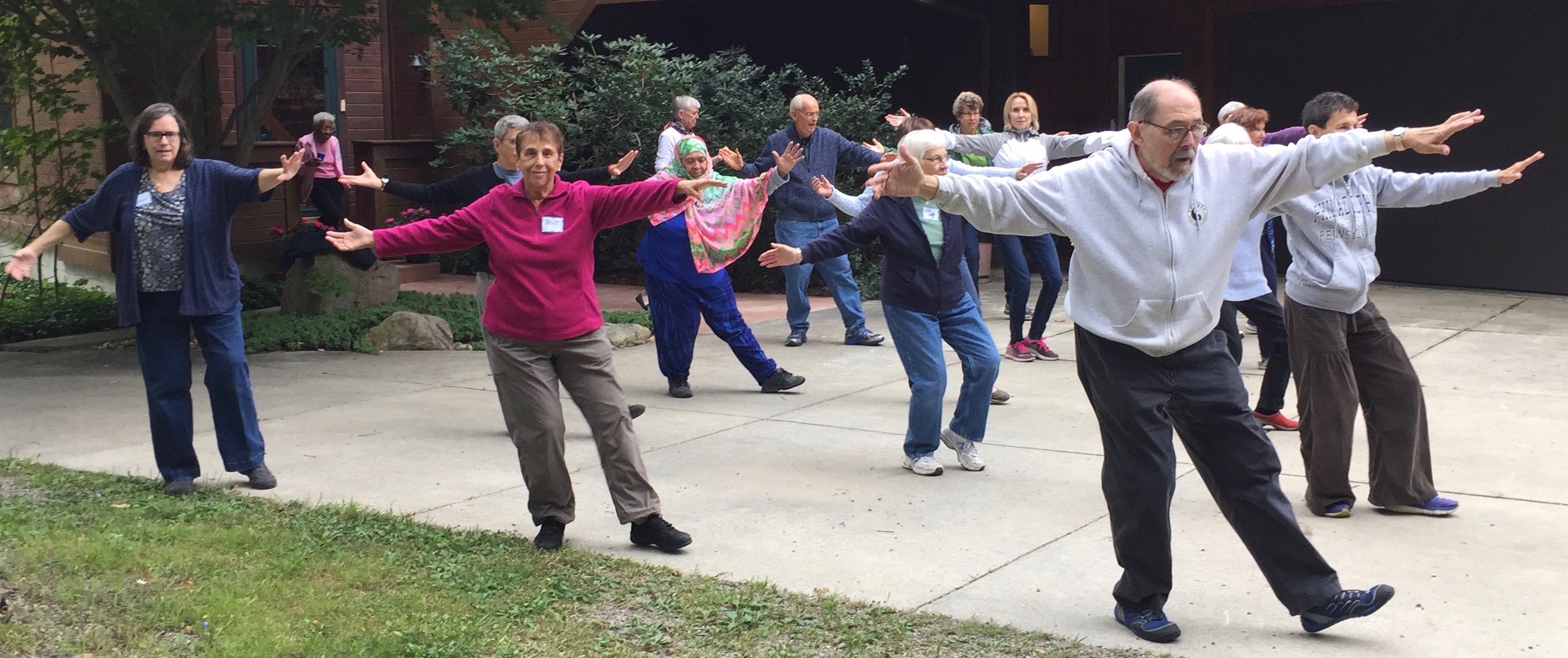By Annette Pinder
This summer I watched a group of people perform tai chi at the Elmwood art festival. Completely synchronized with one another, they were engaged in a slow and gentle silent dance. Often referred to as a “meditation in motion,” I had heard that tai chi was good for you and decided to find out why.
I enrolled in a beginner class at the Taoist Tai Chi® Society, an international charitable volunteer organization located in 26 countries. The practice brings together people of all ages, backgrounds, and walks of life to learn, train, and practice together. They are people who, after realizing the benefits of tai chi for themselves, feel compelled to give back by teaching others what they have learned.
Founded by Master Moy Lin Shin, a Taoist monk who developed a system for cultivating body, mind and spirit, tai chi is based on training he received from respected teachers in China and Hong Kong. After immigrating to Canada, Master Moy taught anyone who wanted to learn. Today, inspired by his vision, dedicated volunteers bring these arts to communities around the world, including four Western New York locations – Amherst, Kenmore, Buffalo, and West Seneca.
According to Medical News Today, tai chi has been found to improve balance, fitness, flexibility, and a host of chronic conditions. It is safe for people of all ages, as it does not put too much stress on the muscles and joints. A 2012 study of 79,193 people found that tai chi reduced the risk of falling in older people. A 2015 review of 544 tai chi practitioners found the practice improved balance control and flexibility. A 2014 Cochrane review found tai chi reduced the fear of falling among older adults in a retirement community. Ongoing studies have also shown that tai chi improves cardiovascular and cognitive health, and helps regulate glucose levels in those with type two diabetes. Individuals with fibromyalgia and osteoarthritis practicing tai chi have been shown to experience a decrease in chronic pain, and those with Parkinson’s disease show improved balance.
While tai chi originated as a martial art, it in no way resembles the strenuous moves involved in karate we often see in movies. Tai Chi’s 108 moves can be learned with patience and practice and performed by people of all ages and states of health, including those in their 90s, in wheelchairs, or who are bedridden. The greatest challenge for beginners is learning to relax, focus, and worry less about what comes next. The challenge is really more mental than it is physical. It really is a moving meditation, which can be challenging in a world that is accustomed to performing quickly and efficiently, rather than calmly and mindfully.
Learn more about tai chi at www.taoisttaichi.org and www.taoisttaichi.org/locations/buffalo-center or call 716-876-7218. You can also come to a free open house on November 11 from 10 am to noon at 968 Kenmore Avenue, and enjoy a free potluck lunch at 12:15 pm.












